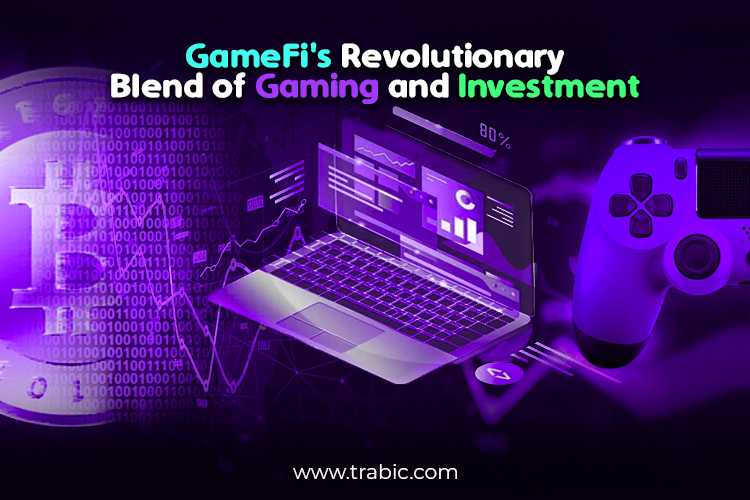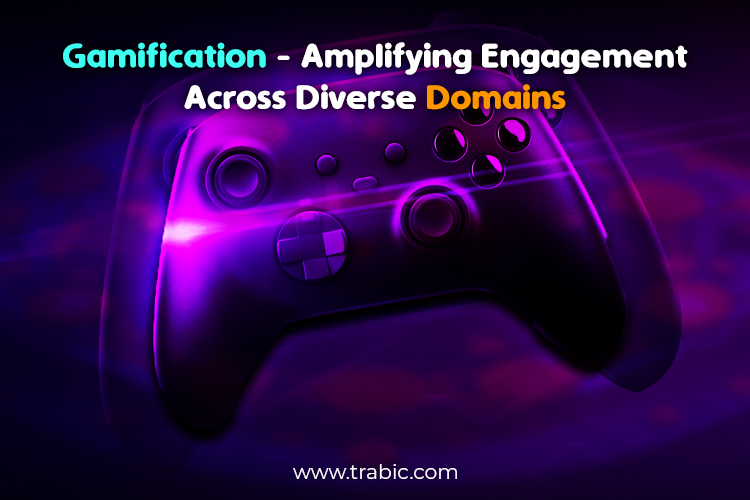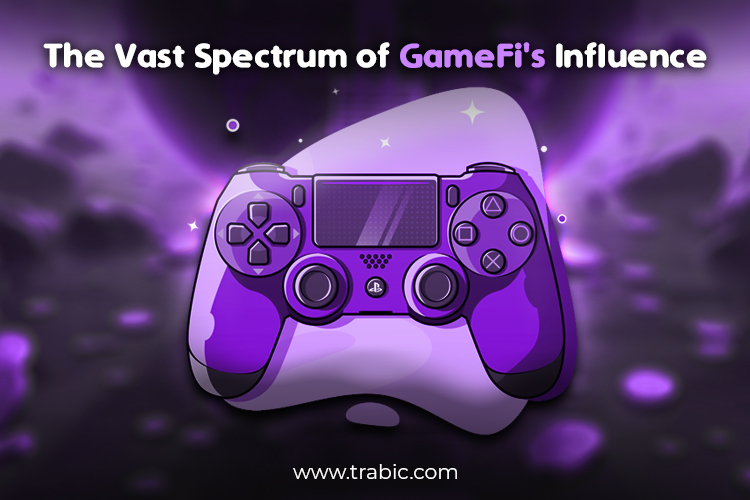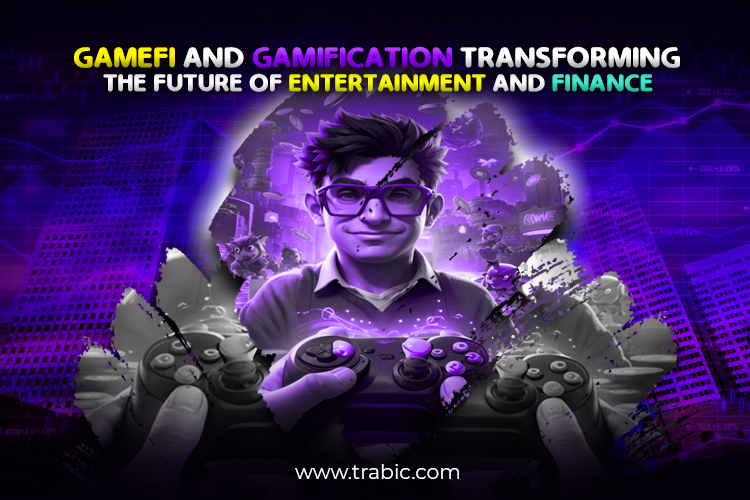In the ever-evolving digital innovation landscape, the convergence of entertainment and finance has yielded a paradigm-shifting phenomenon known as GameFi, standing as a testament to the symbiotic relationship between leisure and economic systems. With a palpable surge in technological prowess, GameFi emerges as a compelling bridge where gaming and traditional financial models gracefully intertwine, birthing novel avenues that redefine engagement and investment.
As a testament to its transformative potential, GameFi reimagines the contours of leisure and heralds a democratized era of finance, wherein participatory interaction transcends conventional boundaries, inviting enthusiasts and investors alike to traverse the uncharted landscapes of virtual economies. At its core, GameFi embodies an intricate synergy wherein gamification, driven by its incentive-driven mechanics and immersive narratives, becomes the cornerstone of a financial metamorphosis that beckons forth the future of recreation and fiscal systems.
GameFi: Where Gaming Meets Finance:

GameFi, short for “Game Finance,” represents a revolutionary convergence of the gaming and blockchain industries. At its core, GameFi involves integrating decentralized finance (DeFi) protocols into video games, allowing players to earn real-world rewards while enjoying immersive gameplay. This concept turns traditional gaming into a source of income, effectively blurring the lines between leisure and earning.
The fundamental elements of GameFi include the following:
- Play-to-earn Mechanism: Unlike traditional games where players invest time and money without direct returns, GameFi offers players the chance to earn cryptocurrency tokens, NFTs (non-fungible tokens), and other valuable digital assets. By performing specific in-game actions or achieving milestones, players can generate income.
- NFT Integration: Non-fungible tokens have revolutionized digital ownership by representing unique digital assets that can be bought, sold, and traded. In the GameFi ecosystem, NFTs can represent in-game items, characters, or virtual real estate, further enhancing player engagement and value.
- Decentralized Ecosystems: Blockchain technology ensures transparency, security, and the elimination of intermediaries in GameFi ecosystems. Smart contracts govern the distribution of rewards, fostering trust between players and developers.
- Community Engagement: GameFi thrives on community participation. Players have a say in game development, tokenomics, and future updates, creating a collaborative environment.
Gamification: Enhancing Engagement Across Domains:

Conversely, gamification involves applying game design principles and mechanics to non-game contexts, motivating users to engage more actively and achieve desired outcomes. This concept has gained prominence in various industries, including education, marketing, and employee training. By tapping into the innate human desire for competition, gamification drives behavioral change and elevates user experiences.
Critical aspects of gamification are:
- Reward Systems: Gamification often employs reward systems, such as points, badges, or levels, to acknowledge user achievements. These rewards boost motivation and engagement, encouraging users to complete tasks or reach goals.
- Progression and Challenges: Users face progressively more complex challenges like games. This gradual increase in difficulty keeps users engaged and provides a sense of accomplishment upon completion.
- Social Interaction: Incorporating social elements like leaderboards, competitions, and collaborative activities fosters community and healthy user competition.
- Learning and Skill Development: Gamification has proven effective in education by making learning more interactive and enjoyable. It allows users to develop skills through practice and experimentation.
The Future Potential:
Both GameFi and gamification hold immense potential for shaping the future landscape of entertainment and various industries:
- Economic Empowerment: GameFi offers new avenues for income generation, particularly in regions with limited economic opportunities. Players can monetize their skills and time spent in-game, potentially altering traditional employment dynamics.
- Financial Inclusion: GameFi can facilitate financial inclusion by allowing individuals without traditional bank accounts to participate in digital economies through gaming platforms.
- Engagement and Learning: Gamification can revolutionize education by making learning more interactive and enjoyable, catering to diverse learning styles, and enhancing information retention.
- Employee Productivity: Applying gamification principles to the workplace can boost employee engagement, motivation, and productivity, leading to a more dynamic and efficient workforce.
In conclusion, the marriage of GameFi and gamification presents a compelling vision for the future. While GameFi transforms gaming into an economic venture, gamification enriches user experiences across domains. As these concepts continue to evolve, they have the potential to reshape industries, create new opportunities, and redefine the way we interact with technology and each other. Whether you’re a passionate gamer, a forward-thinking entrepreneur, or an educator seeking innovative solutions, GameFi and gamification are trends you can’t ignore.
Concept and Purpose:
- GameFi: GameFi, short for “Game Finance,” is the integration of decentralized finance (DeFi) mechanisms into video games. It aims to allow players to earn real-world rewards by engaging in gameplay, typically in cryptocurrency tokens, NFTs, or other digital assets. The focus is on creating economic incentives within games, effectively turning gaming into a source of income.
- Gamification involves game design elements and principles in non-game contexts to enhance user engagement, motivation, and participation. The goal is to encourage users to perform desired actions, achieve goals, or learn through interactive and rewarding experiences. Gamification doesn’t necessarily involve financial rewards but can use various intrinsic and extrinsic motivators to drive behavior.
Reward Structure:
- GameFi: GameFi employs a play-to-earn mechanism, where players receive tangible rewards for in-game activities. These rewards range from cryptocurrency tokens to NFTs representing in-game items or characters. The primary incentive for players is to earn real-world value through their gaming efforts.
- Gamification: Gamification incorporates rewards like points, badges, levels, or virtual goods, which acknowledge user achievements and progress. While these rewards can provide a sense of accomplishment, they typically remain within the context of the platform or application, not necessarily translating into real-world value.
Monetization:
- GameFi: GameFi monetizes players’ time and efforts by allowing them to earn cryptocurrency or valuable digital assets that can be sold for money. It transforms gaming into a potential income source and economic activity.
- Gamification: Gamification doesn’t inherently involve direct monetary rewards. Instead, it focuses on enhancing user experiences, engagement, and interaction. While gamified platforms may indirectly lead to financial gains (e.g., improved sales in a retail gamified app), the primary goal is to influence behavior rather than generate income.
Technology:
- GameFi: GameFi heavily relies on blockchain technology, leveraging smart contracts and decentralized ecosystems to facilitate transparent and secure reward distribution. This technology ensures that players’ earnings and transactions are recorded on an immutable ledger.
- Gamification: Gamification doesn’t inherently require blockchain technology. Instead, it can be implemented using traditional software and digital platforms. However, technological tools might be used to track user engagement and progress, enhancing the gamified experience.
Applications:
- GameFi: GameFi is primarily relevant within the gaming industry. It transforms video games into platforms where players can earn income while enjoying gameplay. It blurs the lines between leisure and economic activity.
- Gamification: Gamification applies to various industries, including education, marketing, employee training, health and wellness, and more. It aims to enhance user engagement, motivation, and learning in various contexts beyond gaming.
Impact:
- GameFi: GameFi has the potential to disrupt traditional gaming and create new economic opportunities, especially for players in regions with limited employment options. It introduces a novel income stream for gamers while fostering decentralized economies within virtual worlds.
- Gamification: Gamification enhances user experiences, learning, and engagement across different industries. It can improve education, training, customer interaction, and productivity by tapping human psychological motivations.
GameFi and gamification are distinct concepts with different focuses and applications. GameFi integrates gaming with finance to allow players to earn real-world rewards, while gamification leverages game elements to enhance user engagement and motivation in various domains. Both concepts are innovative and have the potential to reshape industries and interactions in the digital age.
The scope of GameFi:

The scope of GameFi is extensive and holds significant potential to reshape the landscape of both the gaming and financial industries. As the fusion of gaming and decentralized finance (DeFi), GameFi introduces new economic opportunities, innovative business models, and enhanced player engagement. Here are some key aspects that highlight the scope of GameFi:
- Economic Empowerment: GameFi has the potential to create economic empowerment for players, particularly in regions where traditional job opportunities are limited. By allowing players to earn cryptocurrency tokens, NFTs, and other digital assets through gameplay, GameFi transforms leisure time into an income-generating activity. Skilled players can monetize their expertise, reducing the gap between gaming and employment.
- Virtual Economies: GameFi contributes to the growth of virtual economies within gaming ecosystems. Virtual items, characters, and real estate represented as NFTs can be bought, sold, and traded within and outside games. This fosters a new marketplace for digital assets and enables players to exert greater control over their in-game possessions.
- DeFi Integration: GameFi leverages DeFi protocols to enable seamless financial transactions within games. Players can stake their assets, provide liquidity, or participate in yield farming activities, all while immersed in the gaming environment. This integration opens up avenues for decentralized lending, borrowing, and investment strategies.
- Innovative Business Models: Game developers are exploring new business models by integrating GameFi elements. Instead of relying on game sales or in-app purchases, developers can generate revenue through transaction fees, NFT sales, and value-added services. This evolution challenges traditional game monetization strategies and encourages more player-centric models.
- NFT Utility and Interoperability: NFTs are pivotal in GameFi, representing unique in-game assets and characters. These NFTs can extend their utility beyond individual games and potentially be used in multiple games or virtual worlds. This interoperability encourages cross-game asset utilization and creates a more cohesive metaverse.
- Community Participation: GameFi thrives on community engagement. Players often have a say in decisions related to the game’s development, updates, and tokenomics. This approach fosters a sense of ownership among players, leading to more sustainable and player-friendly game ecosystems.
- Digital Identity and Ownership: GameFi can establish a player’s digital identity through their in-game achievements, holdings, and activities. As players accumulate valuable assets, they establish a virtual identity that can have real-world value. This digital ownership concept challenges traditional notions of asset ownership.
- Financial Inclusion: GameFi has the potential to extend financial services to individuals who are excluded from banking systems. By participating in virtual economies, players can access financial activities like saving, lending, and investing, even if they lack access to conventional banking facilities.
- Entertainment and Investment Convergence: GameFi merges entertainment and investment, creating an engaging and potentially profitable player experience. This convergence can attract a broader range of users, from dedicated gamers to investors looking for novel opportunities in the digital space.
- Metaverse Development: GameFi can contribute to developing interconnected virtual worlds as the metaverse concept gains traction. Players’ assets and rewards can move seamlessly between metaverse components, promoting a unified user experience across various platforms.
In conclusion, the scope of GameFi is multifaceted, encompassing economic empowerment, virtual economies, innovative business models, NFT utilization, community engagement, and more. GameFi is positioned to transform how people interact with games, finance, and the digital world as the gaming and blockchain industries evolve.
The scope of gamification is broad and versatile, with applications spanning various industries and sectors. It uses game design principles to enhance user engagement, motivation, and interaction in non-game contexts. Here’s a comprehensive overview of the scope of gamification:
- Education: Gamification significantly impacts education by making learning more interactive and enjoyable. It can be employed in schools, online courses, and e-learning platforms to encourage students to complete assignments, quizzes, and projects. Badges, points, and leaderboards can motivate learners to participate and achieve better outcomes actively.
- Marketing and Sales: In marketing, gamification can boost brand engagement and customer loyalty. Loyalty programs, contests, and reward systems encourage customers to repeat purchases and use promotional campaigns. Interactive quizzes and challenges can educate consumers about products or services engagingly.
- Employee Training and Productivity: A gamification is an effective tool for employee training and development. Employees are likelier to engage with and retain the information by turning training modules into interactive games. Leaderboards and challenges can promote healthy competition among employees, driving them to enhance their skills and productivity.
- Health and Wellness: In the health sector, gamification can encourage healthier behaviors. Fitness apps use gamified elements to motivate users to reach their exercise goals. In contrast, wellness programs use rewards and challenges to encourage positive habits like drinking more water or getting enough sleep.
- Financial Services: Gamification can be used to educate users about financial literacy and investment strategies. Apps and platforms can simulate investment scenarios, allowing users to learn about financial decision-making in an interactive way. Rewards and progress tracking encourage users to save and invest.
- Environmental Conservation: Gamification can promote environmental awareness and encourage eco-friendly behaviors. Apps and platforms can challenge users to reduce their carbon footprint, recycle more, or participate in community clean-up activities. Rewards and recognition can incentivize users to take positive actions for the environment.
- Product Design and Innovation: In design, gamification can gather user feedback and ideas for new products. Interactive surveys, competitions, and design challenges can engage users in the creative process, leading to innovative product concepts.
- Social Change and Activism: Gamification can drive social change by encouraging users to participate in charitable activities and awareness campaigns. Challenges and goals can be set to support causes such as poverty alleviation, education, and disaster relief.
- Government and Civic Engagement: Gamification can be applied to encourage civic participation and engagement in government initiatives. Platforms can reward citizens for participating in community events, voting in elections, or providing feedback on public policies.
- Entertainment and Apps: Entertainment platforms like streaming services and social media apps can use gamification to enhance user experiences. Challenges, badges, and interactive features can keep users engaged and invested in the platform.
In essence, the scope of gamification is vast and adaptable. It capitalizes on intrinsic human motivations, like competition, achievement, and social interaction, to drive desired behaviors and outcomes in various contexts. As technology advances, the potential applications of gamification are only expanding, offering innovative solutions to engage and motivate individuals across different industries and sectors.
In the dynamic landscape of technology and human interaction, the concepts of GameFi and gamification are reshaping the way we approach entertainment, finance, education, and more.
GameFi emerges as a groundbreaking fusion of gaming and decentralized finance. It transforms playtime into a source of income and pioneers virtual economies where players can earn tangible rewards, such as cryptocurrency tokens and NFTs. By integrating blockchain technology and decentralization, GameFi creates a new paradigm that empowers players, fosters community collaboration, and blurs the lines between gaming and financial activities.
On the other hand, gamification harnesses the psychological triggers that make games so engaging and applies them across various industries. It motivates users to learn, engage, and achieve by incorporating rewards, challenges, and progression. Gamification’s reach extends from education to marketing, employee training to environmental conservation, and shaping behaviors and experiences in diverse ways.
As we look ahead, the potential of both GameFi and gamification is immense. GameFi offers players new economic avenues and financial inclusion and lays the foundation for a metaverse where digital assets hold real-world value. Gamification enhances learning, boosts productivity, and fosters positive change across industries, transcending the boundaries of traditional approaches.
Together, GameFi and gamification epitomize the power of innovative thinking. They invite us to reimagine how we interact with technology, entertainment, finance, and education. These concepts remind us that the convergence of fun, engagement, and real-world impact is possible and essential in shaping a more dynamic and fulfilling future. As these trends evolve, they promise to transform industries, empower individuals, and redefine how we experience the world around us.
